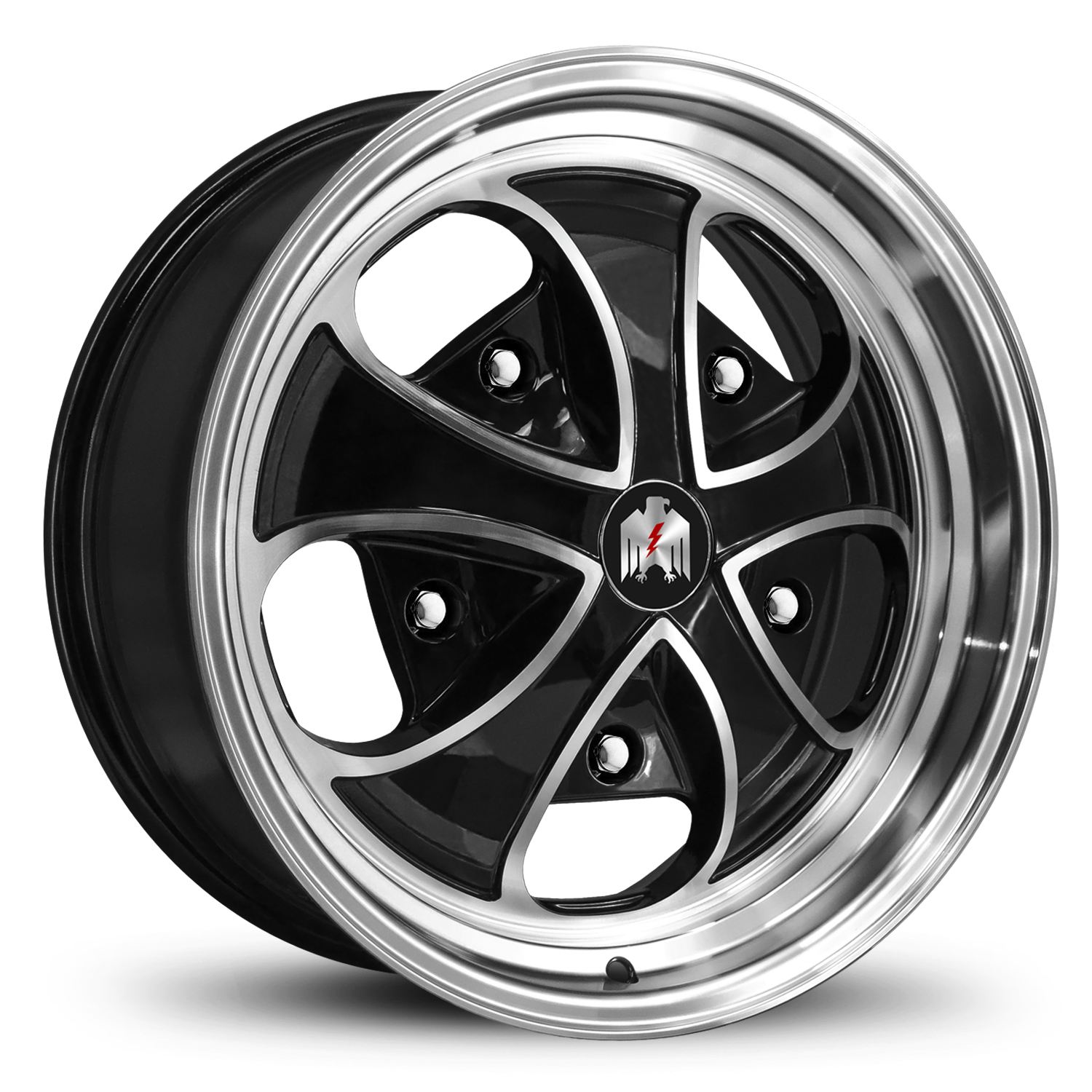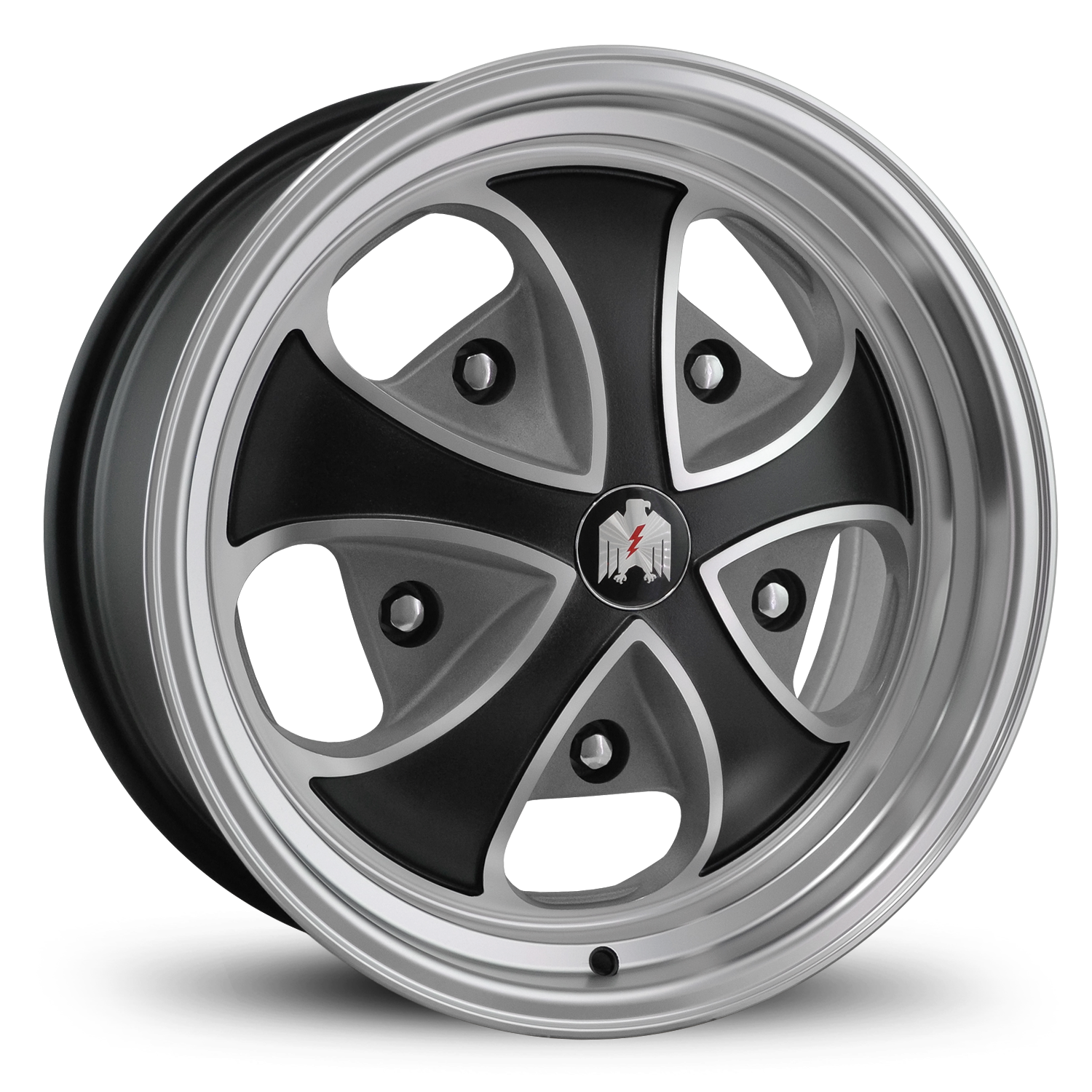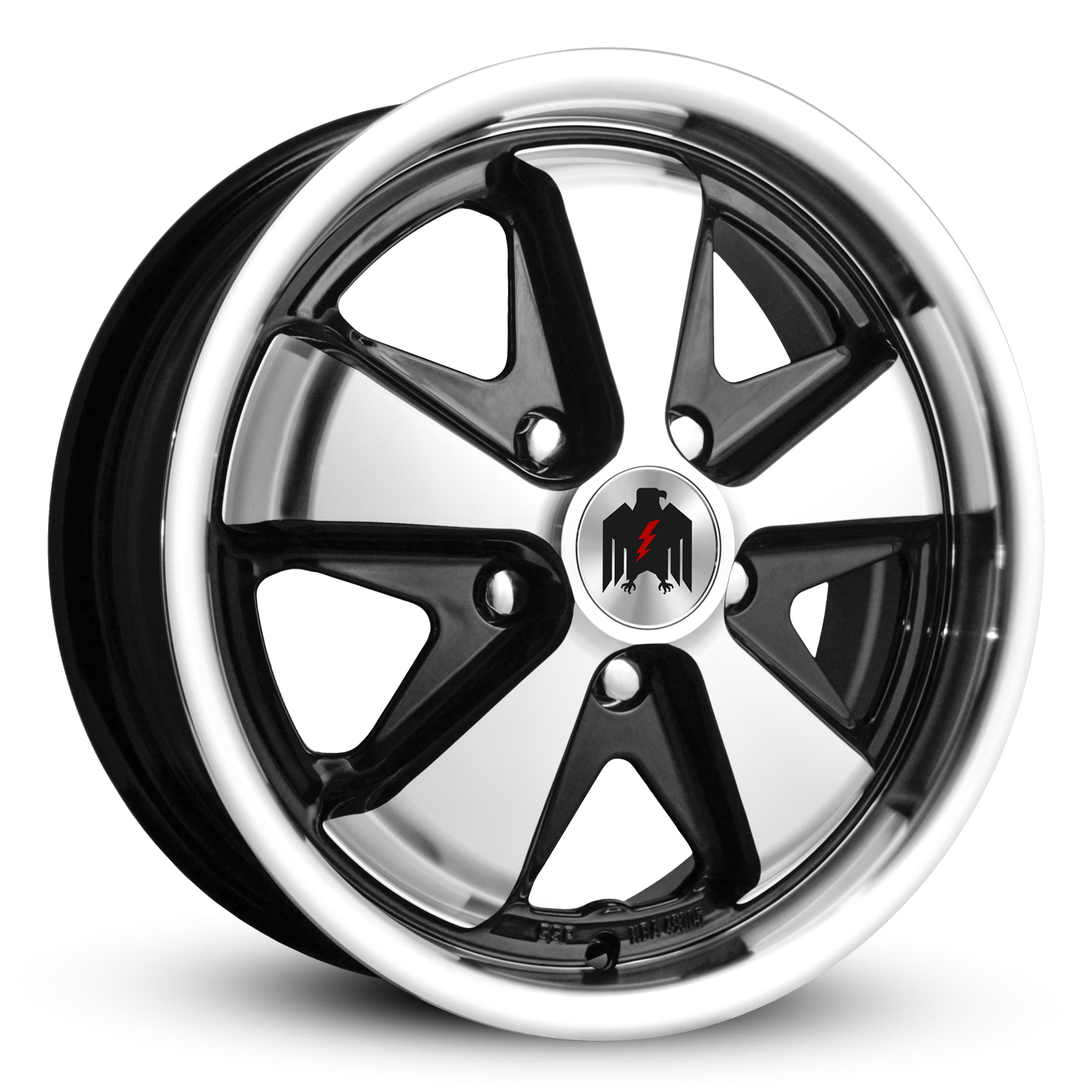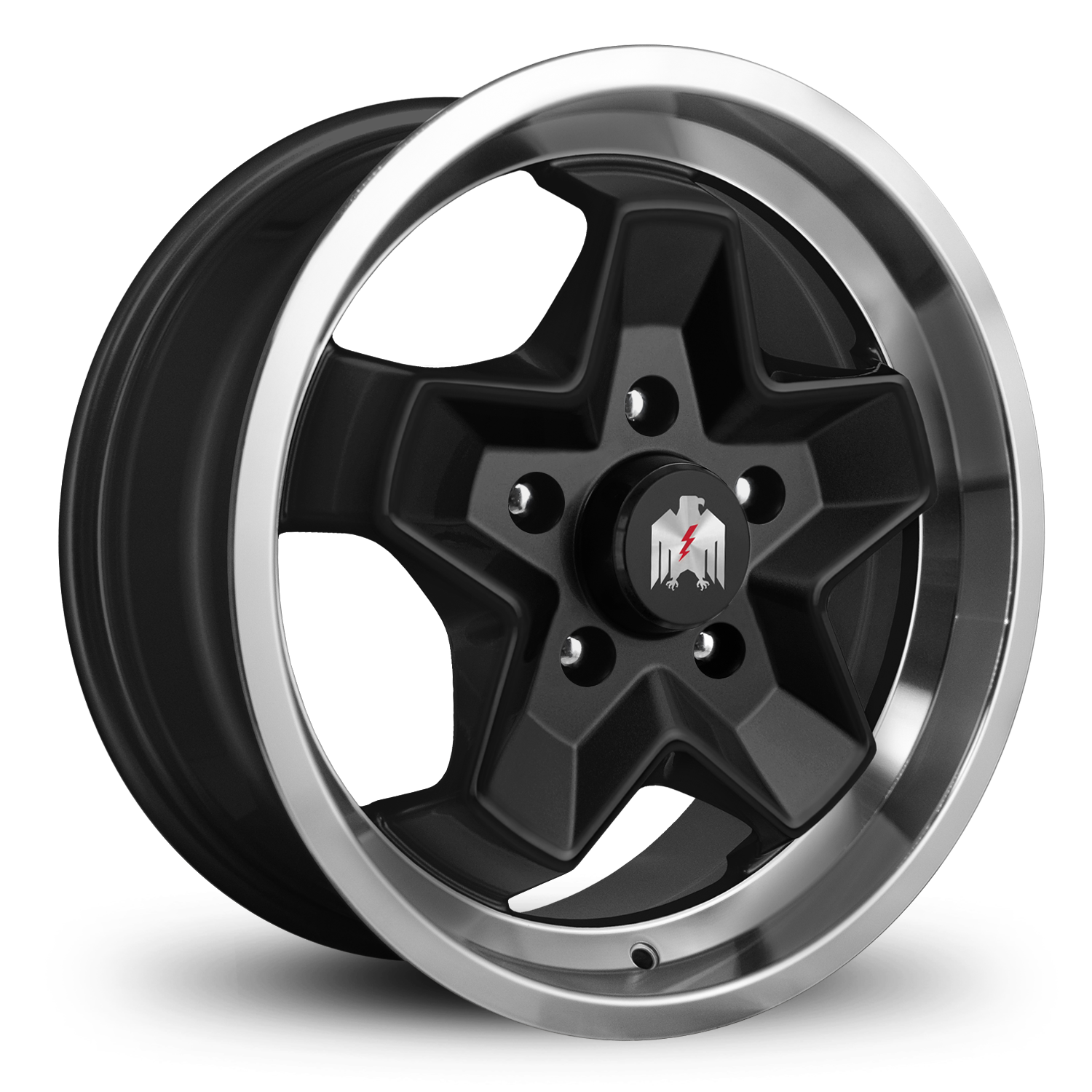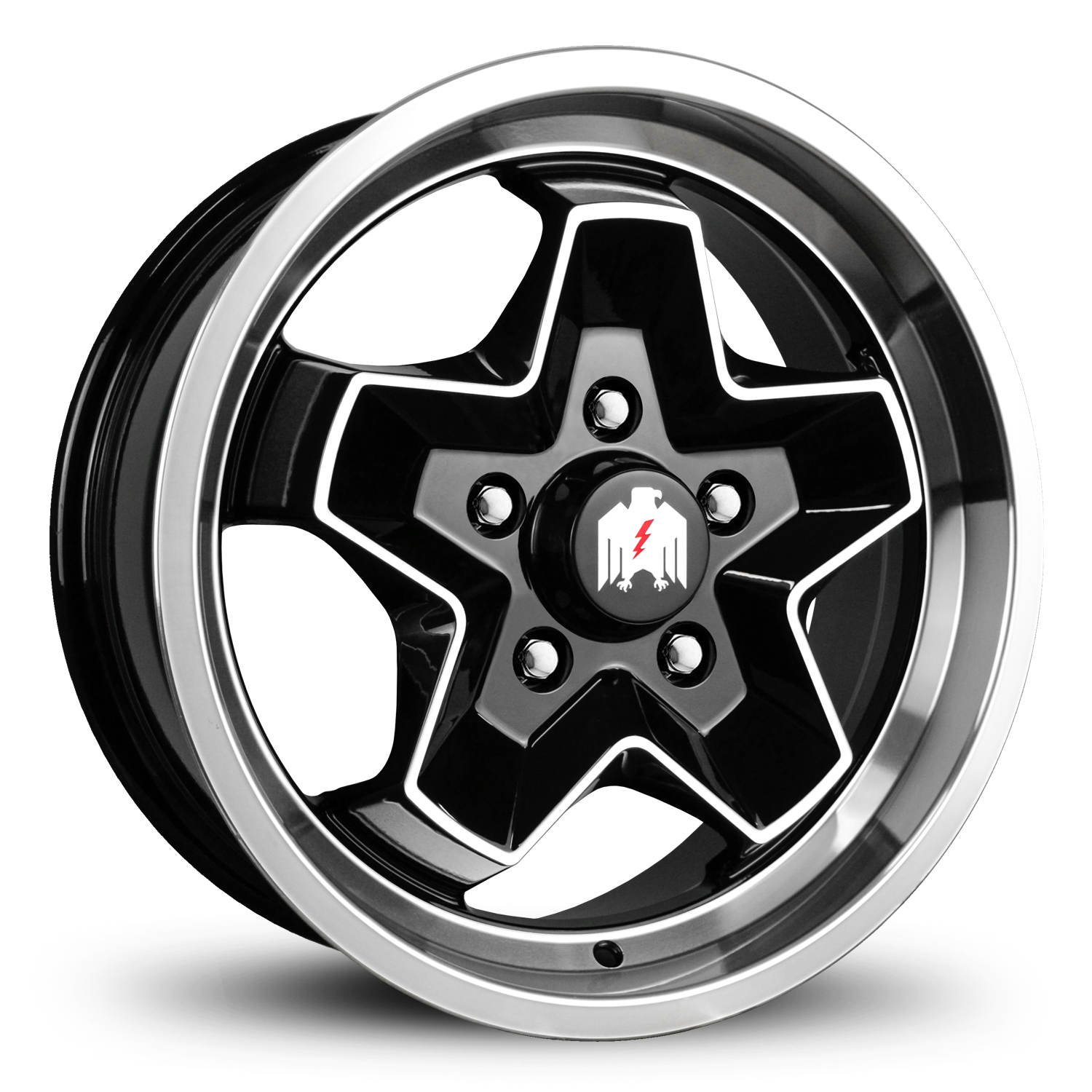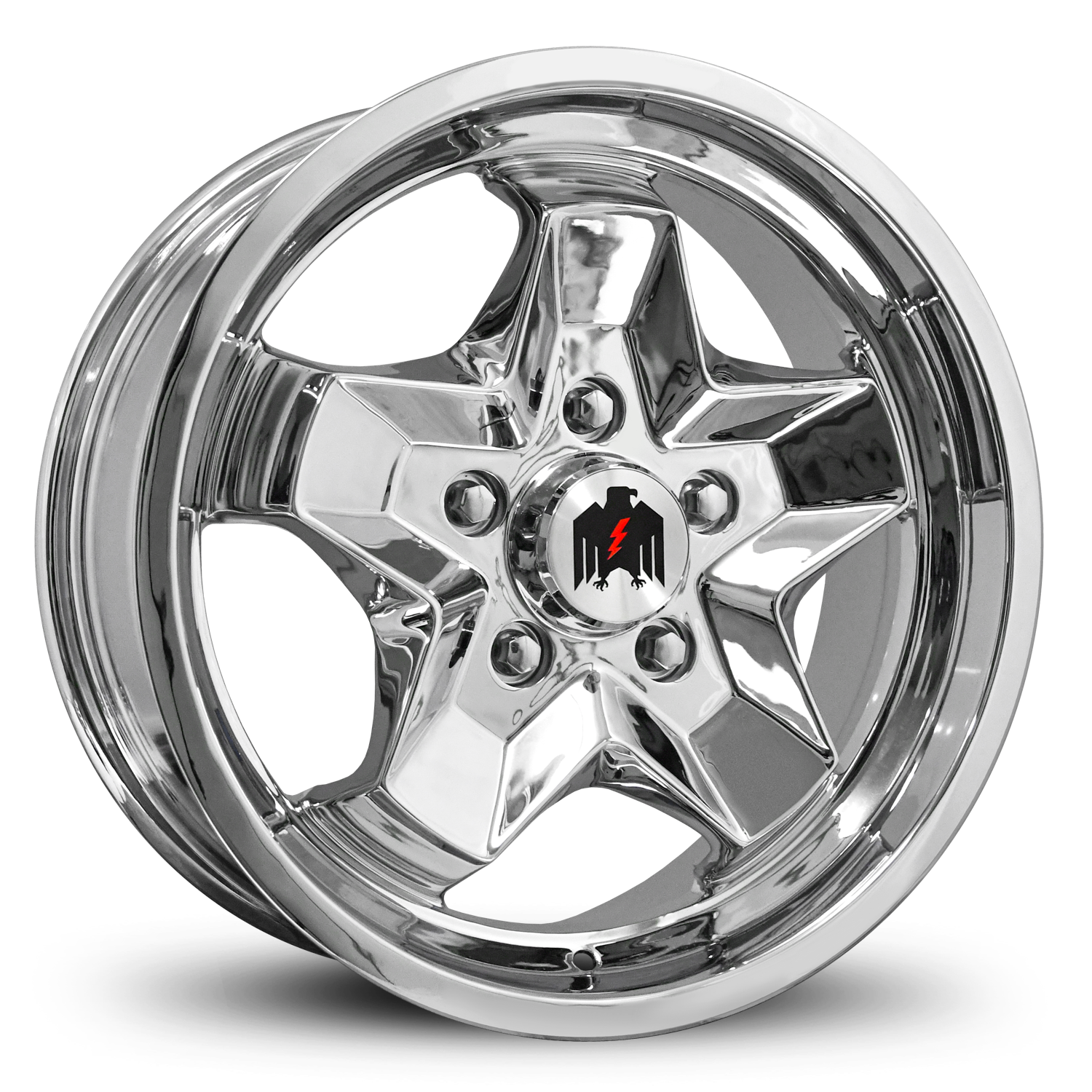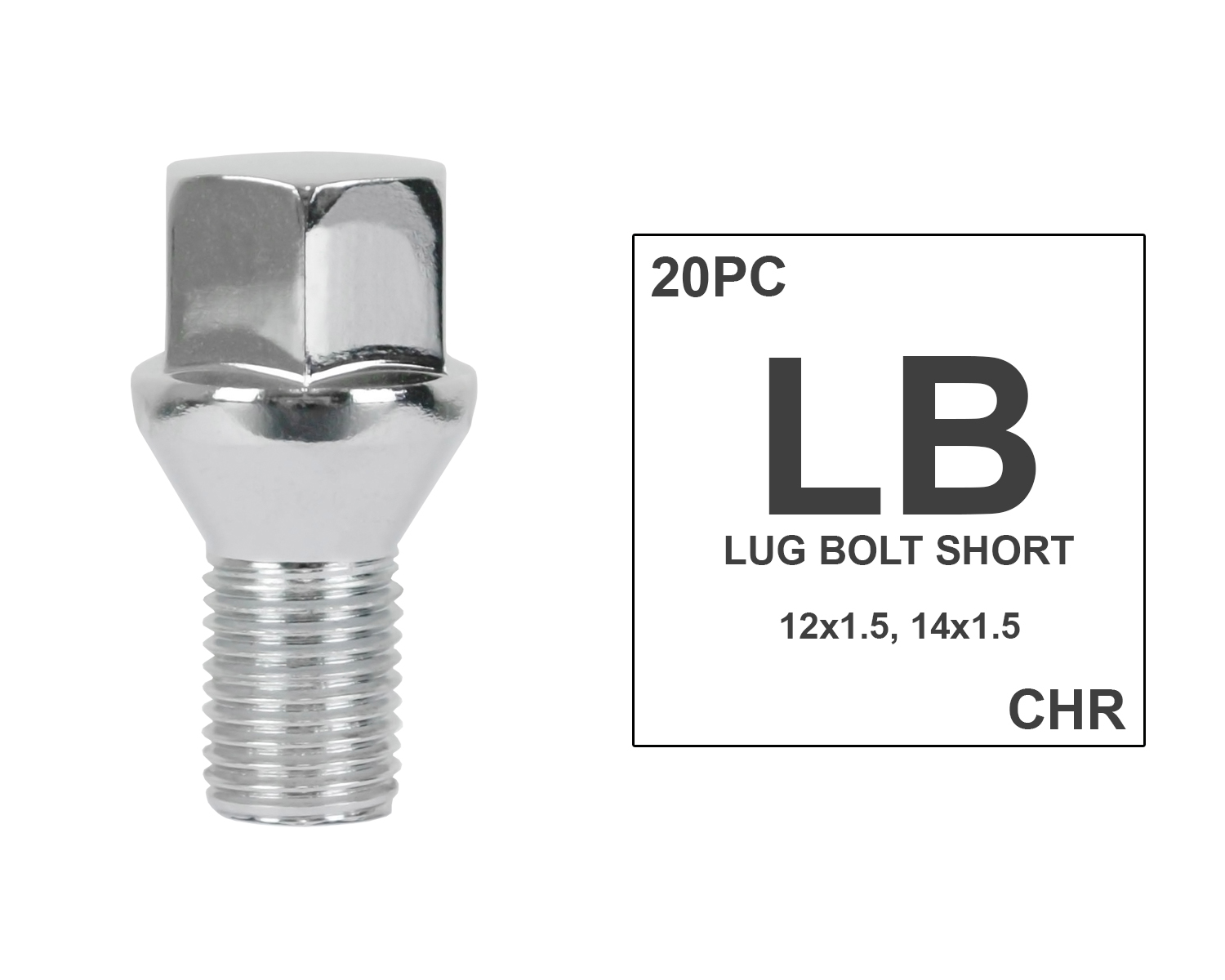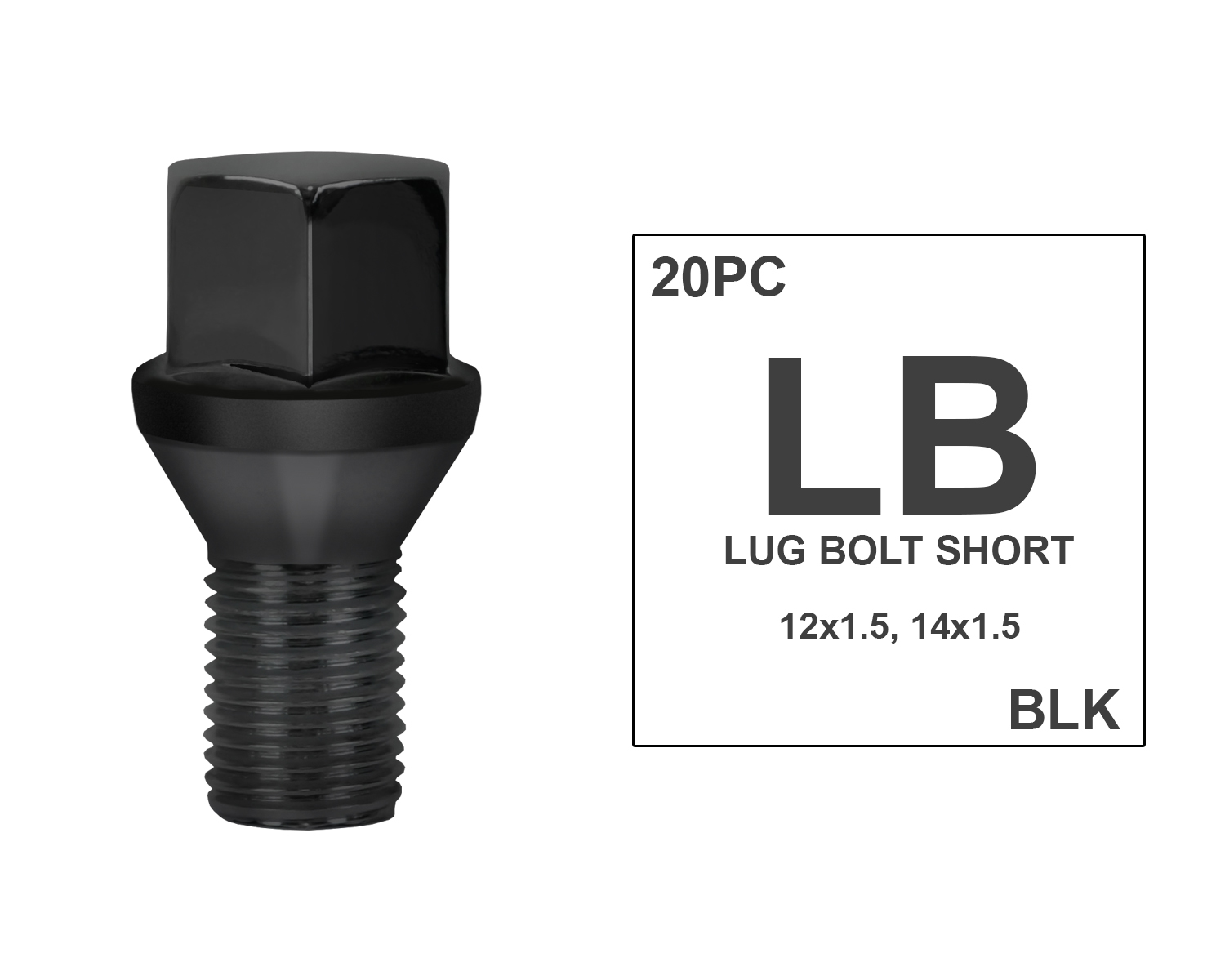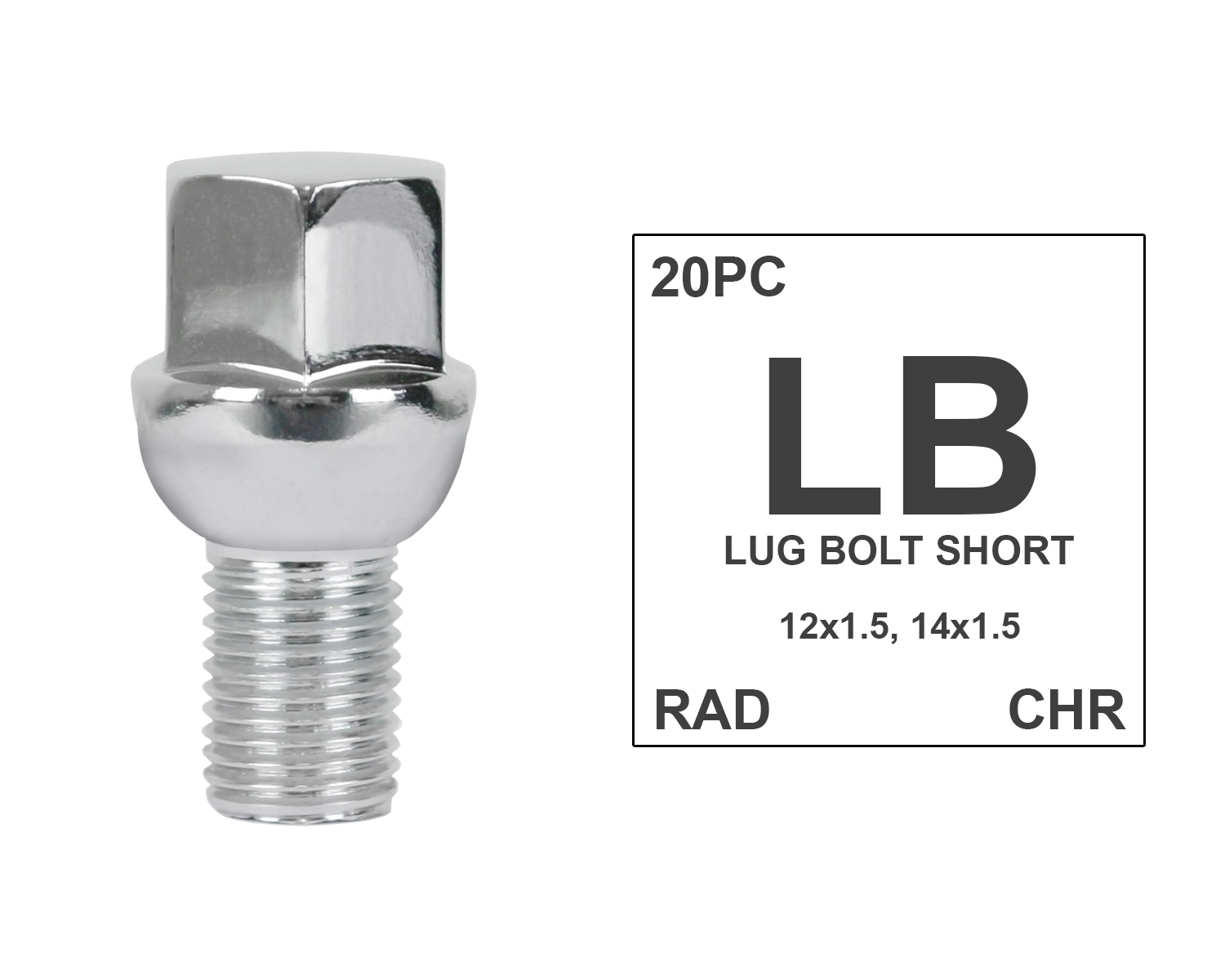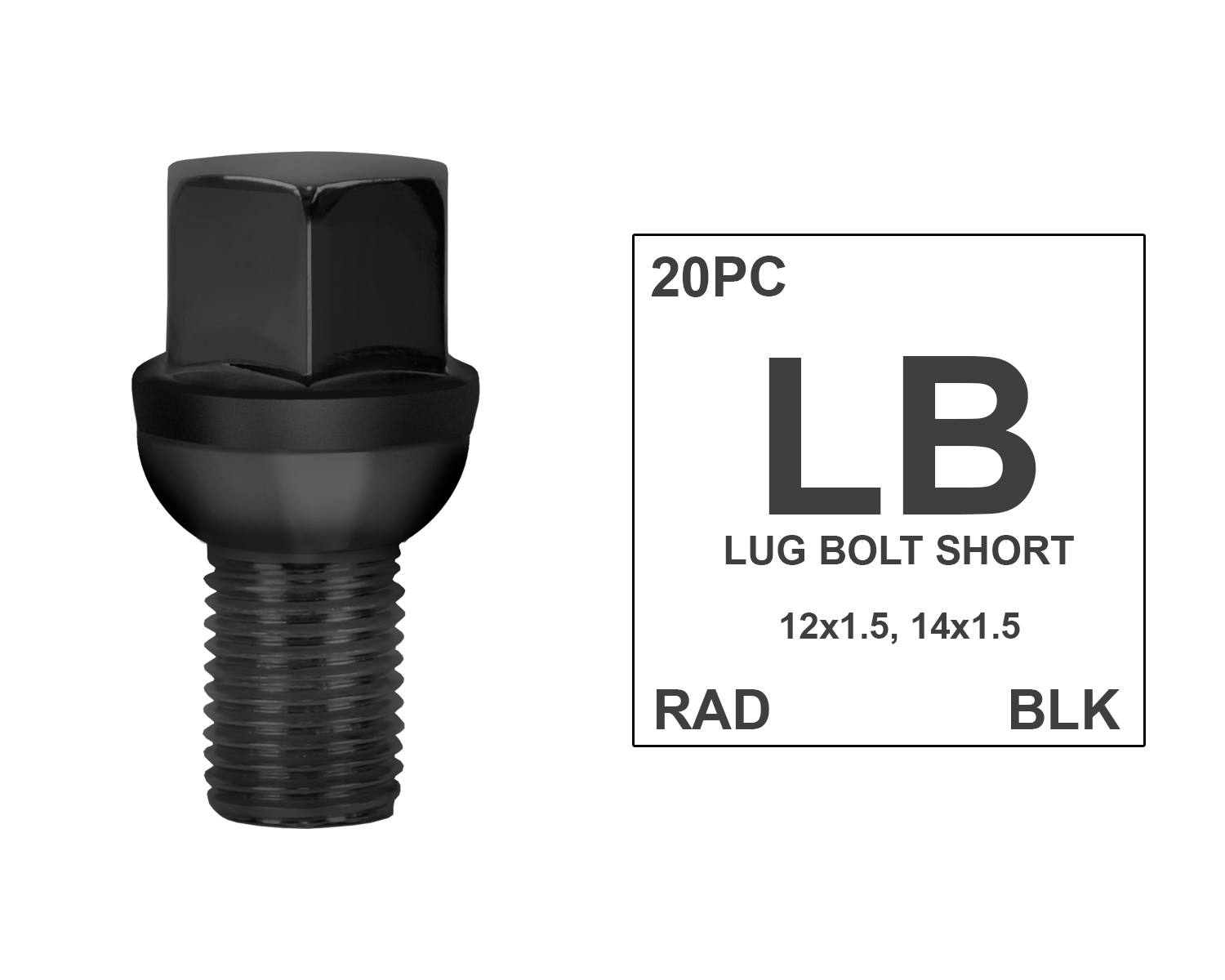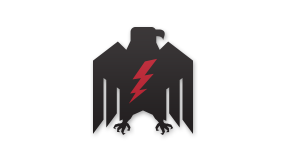
VOLKSWAGEN TYPE 2 BUS 1955 to 1970
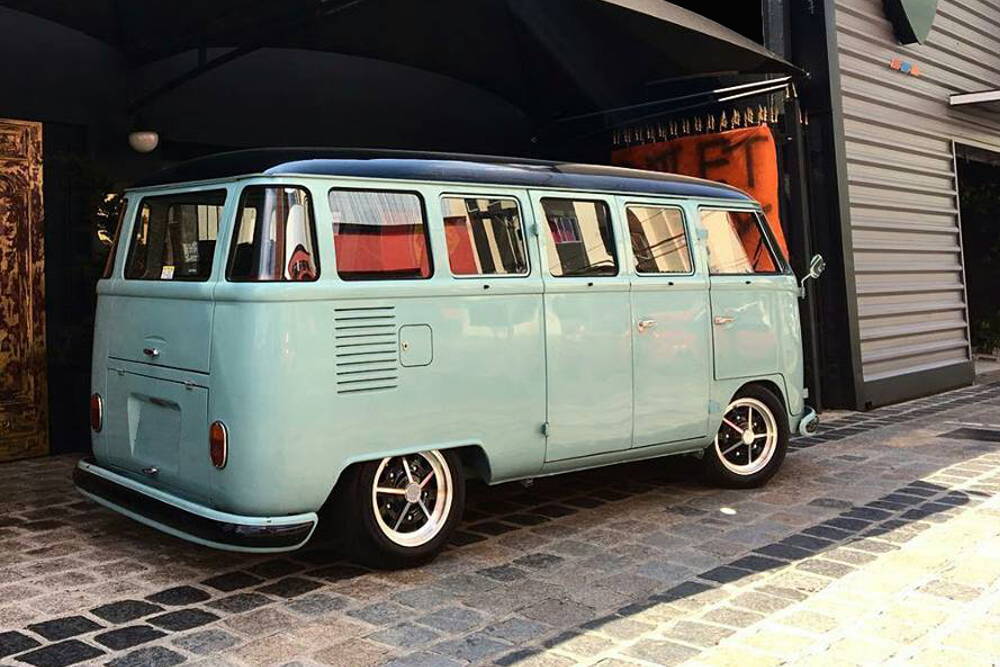
TYPE-2 WHEEL & HUB SPECS
• Bolt Pattern: 5x205
• Offset Range: -32mm to +20mm
• Center Bore: 161mm
• Lug Type: Bolt
• Lug Thread Pitch: 12mm x 1.5mm ( 17mm L )
TYPE-2 TIRE SIZE OPTIONS
15 Inch Wheel
• Stock Height: 165/80-R15
• Lowered: 195/50-R15
• Lowered Staggered F/ 195/50-R15 R/ 205/60-R15
17 Inch Wheel
• Stock Height: 205/55-R17
• Lowered: 205/45-R17
• Lowered Staggered: F/ 205/45-R17 R/ 215/50-R17
LEARN MORE ABOUT THE VOLKSWAGEN ( TYPE 2 ) BUS
The Volkswagen Type 2, known officially (depending on body type) as the Transporter, Kombi or Microbus, or, informally, as the Bus (US), Camper (UK) or Bulli (Germany), is a forward control light commercial vehicle introduced in 1950 by the German automaker Volkswagen as its second car model. Following – and initially deriving from – Volkswagen's first model, the Type 1 (Beetle), it was given the factory designation Type 2.
As one of the forerunners of the modern cargo and passenger vans, the Type 2 gave rise to forward control competitors in the United States in the 1960s, including the Ford Econoline, the Dodge A100, and the Chevrolet Corvair 95 Corvan, the latter adapting the rear-engine configuration of the Corvair car in the same manner in which the VW Type 2 adapted the Type 1 layout.
European competition included the 1947–1981 Citroën H Van, the 1959–1980 Renault Estafette (both FF layout), and the 1953–1965 FR layout Ford Transit.
Japanese manufacturers also introduced similar vehicles, such as the Nissan Caravan, Toyota LiteAce and Subaru Sambar.
Like the Beetle, the van has received numerous nicknames worldwide, including the "microbus", "minibus", and, because of its populariy during the counterculture movement of the 1960s, "Hippie van/bus".
Brazil contained the last factory in the world that produced the T2 series of Type 2, which ceased production on 31 December 2013, due to the introduction of more stringent safety regulations in the country.[4] This (after the 2002 termination of its T3 successor in South Africa) marked the end of the era of rear-engine Volkswagens, which originated in 1935 with their Type 1 prototypes.
The concept for the Type 2 is credited to Dutch Volkswagen importer Ben Pon. (It has similarities in concept to the 1920s Rumpler Tropfenwagen and 1930s Dymaxion car by Buckminster Fuller, neither of which reached production.) Pon visited Wolfsburg in 1946, intending to purchase Type 1s for import to the Netherlands, where he saw a Plattenwagen, an improvised parts-mover based on the Type 1 chassis, and realized something better was possible using the stock Type 1 pan. He first sketched the van in a doodle dated 23 April 1947, proposing a payload of 690 kg (1,520 lb) and placing the driver at the very front. The sketch is now in the Rijksmuseum.
Production would have to wait, however, as the factory was at capacity producing the Type 1.
When capacity freed up, a prototype known internally as the Type 29 was produced in a short three months. The stock Type 1 pan proved to be too weak so the prototype used a ladder chassis with unit body construction. Coincidentally the wheelbase was the same as the Type 1's. Engineers reused the reduction gear from the Type 82, enabling the 1.5 ton van to use a 25 hp (19 kW) flat four engine.
Although the aerodynamics of the first prototypes were poor (with an initial drag coefficient of Cd=0.75),[1] engineers used the wind tunnel at the Technical University of Braunschweig to optimize the design. Simple changes such as splitting the windshield and roofline into a "vee" helped the production Type 2 achieve Cd=0.44, exceeding the Type 1's Cd=0.48.[8] Volkswagen's new chief executive officer Heinz Nordhoff (appointed 1 January 1948 approved the van for production on 19 May 1949 and the first production model, now designated Type 2, rolled off the assembly line to debut 12 November. Only two models were offered: the Kombi (with two side windows and middle and rear seats that were easily removable by one person), and the Commercial. The Microbus was added in May 1950, joined by the Deluxe Microbus in June 1951. In all 9,541 Type 2s were produced in their first year of production.
An ambulance model was added in December 1951 which repositioned the fuel tank in front of the transaxle, put the spare tire behind the front seat, and added a "tailgate"-style rear door. These features became standard on the Type 2 from 1955 to 1967. 11,805 Type 2s were built in the 1951 model year. These were joined by a single-cab pickup in August 1952, and it changed the least of the Type 2s until all were heavily modified in 1968.
1959 Volkswagen Westfalia Camper at The Henry Ford
Unlike other rear engine Volkswagens, which evolved constantly over time but never saw the introduction of all-new models, the Transporter not only evolved, but was completely revised periodically with variations retrospectively referred to as versions "T1" to "T5" (a nomenclature only invented after the introduction of the front-drive T4 which replaced the T3). However, only generations T1 to T3 can be seen as directly related to the Beetle (see below for details)[citation needed].
The Type 2, along with the 1947 Citroën H Van, are among the first 'forward control' vans in which the driver was placed above the front roadwheels. They started a trend in Europe, where the 1952 GM Bedford CA, 1958 RAF-977, 1959 Renault Estafette, 1960 BMC Morris J4, and 1960 Commer FC also used the concept. In the United States, the Corvair-based Chevrolet Corvan cargo van and Greenbrier passenger van adopted the use of the rear-engine layout of the Corvair car in the same manner that the Type 2 had used the rear-engine layout of the Type 1, using the Corvair's horizontally opposed, 6 cylinder air-cooled engine for power.
Except for the Greenbrier and various 1950s–70s Fiat minivans, the Type 2 remained unique in being rear-engined. This was a disadvantage for the early "barndoor" Panel Vans, which could not easily be loaded from the rear because the engine cover intruded on interior space, but generally advantageous in traction and interior noise. The Corvair pickup used a folding side panel that functioned as a ramp into the bed when opened, and was called the "Rampside". The VW "pickup" in both single and double cab versions had a bed/floor that was flat from front to back at the height of the engine compartment cover, which had the advantage of a flat load floor but at a greater height, while the Corvair "pickup" bed/floor stepped down in front of the engine compartment to a much lower load floor which worked well with the unique "Rampside" configuration for loading.
Decades after production of the Type 2 ended, Volkswagen announced in 2017 that they would be bringing an electric VW microbus out based on the new MEB platform in 2022.

